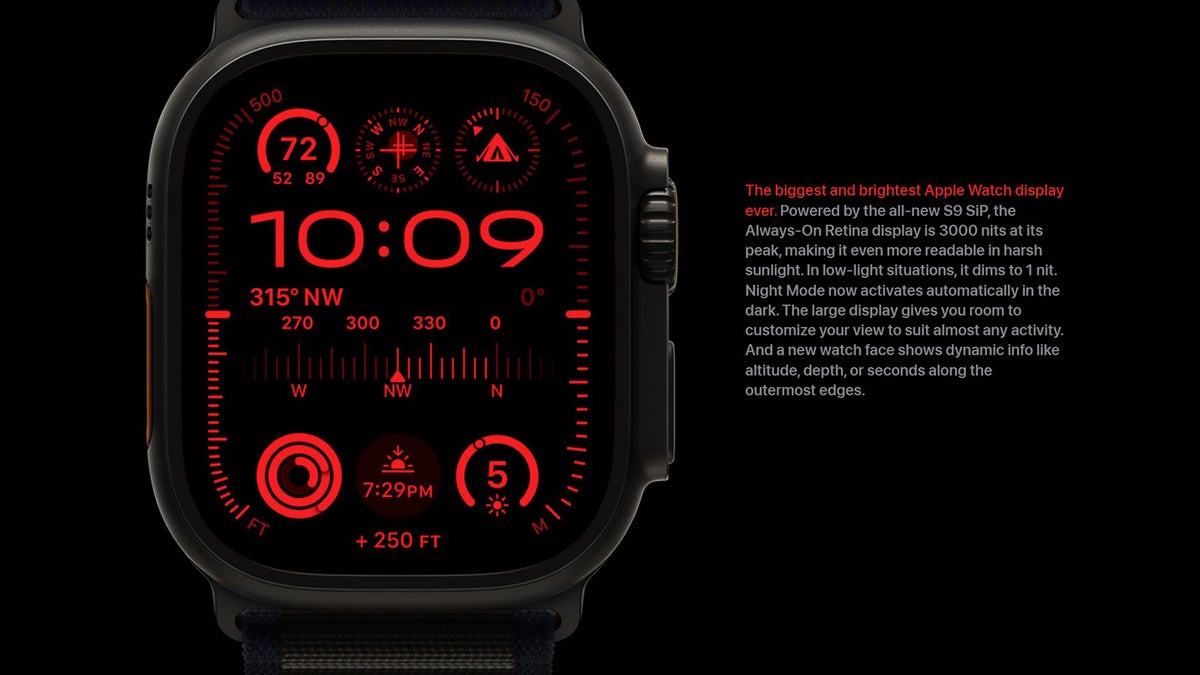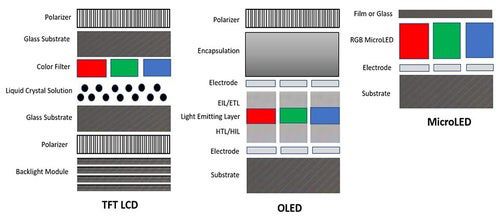Highlights
-
Apple Watch Ultra 3’s shift to microLED technology faces up to a two-year delay.
-
MicroLED displays promise lower power consumption and higher brightness.
-
Potential price hike could make the Watch Ultra more expensive than flagship iPhones.
-
Apple’s microLED adoption challenges may impact OLED orders from Samsung and LG.
Apple’s next big leap in wearable technology is being touted to be the introduction of microLED displays, starting with the Apple Watch Ultra 3.
However, recent reports suggest that fans may have to wait longer than expected, as the transition to microLED technology faces substantial hurdles, potentially delaying the Apple Watch Ultra 3 by up to two years.
Oh, and it’s probably going to cost quite a lot.
Apple Watch Ultra with microLED

For years, Apple has poured resources into microLED research, aiming to wean off its reliance on OLED panels predominantly supplied by tech giants Samsung and LG.
MicroLED technology, with its lower power consumption and higher brightness levels, might enhance the rugged and high-performance Apple Watch Ultra.
The Economic Challenge

Despite the clear advantages of microLED displays, their adoption comes at a steep cost.
Analysts predict that the price of an Apple Watch Ultra equipped with a microLED screen could nearly double, a significant jump that would make it more expensive than the current flagship iPhone model.
This price hike is attributed to the complexities and costs associated with producing microLED displays at scale, a challenge that has reportedly led Apple to scale back its ambitions.
Initially, Apple planned to debut microLED technology with the Watch Ultra 3 alongside the iPhone 16 series.
However, the high costs and production difficulties have pushed Apple to reconsider, possibly delaying the widespread adoption of microLED across its product lineup, including iPhones, iPads, and Macs.
The Impact on the Display Industry

The shift towards microLED technology is expected to have a ripple effect on Apple’s current display suppliers, Samsung and LG.
A report from the Korean Institute for Information & Communication Technology Promotion suggests an initial drop in orders for OLED panels.
However, it also posits that Apple may eventually outsource microLED production to these companies, potentially offsetting any initial losses.

FAQs
What is microLED technology?
MicroLED technology offers significant advantages over OLED, including lower power consumption and higher brightness, making it an ideal choice for enhancing the display quality of devices like the Apple Watch Ultra.
Why is the Apple Watch Ultra 3 facing delays?
The transition to microLED technology for the Apple Watch Ultra 3 is reportedly delayed by up to two years due to production challenges and the high costs associated with scaling the technology for mass production.
How might the cost of the Apple Watch Ultra change with microLED?
Analysts predict that incorporating a microLED display could nearly double the price of the Apple Watch Ultra, positioning it at a higher price point than current flagship iPhone models due to production complexities.
What impact does the shift to microLED have on Apple’s suppliers?
The move towards microLED is expected to initially reduce orders for OLED panels from suppliers like Samsung and LG. However, Apple may eventually outsource microLED production to these companies, potentially mitigating any initial downturn.
MicroLED Apple Watch Ultra May Be Delayed Due to Supply Chain Issues.Details?
Apple is widely expected to bring a microLED display to the Apple Watch Ultra, but a new report out of Korea suggests the company may not have the supply chain configured early enough to launch the device by 2026.
Throughout last year, Taiwanese research firm TrendForce predicted a 2026 launch timeframe for the device. That’s later than several other sources, which have centered on 2025.
However, according to The Elec, problems relating to high manufacturing costs and production yields remain the biggest obstacles to mass production of the microLED Apple Watch Ultra and could even delay the release beyond 2026.
Apple has reportedly been working on custom microLED display technology for almost a decade.
The advanced display offers improved brightness, color reproduction, dynamic range, viewing angles, and efficiency, making images look more like they are “painted” atop the display glass.
The current Apple Watch Ultra has a display size of 1.93-inches, whereas the upcoming microLED model is expected to feature a 2.12-inch screen. Apple’s problem is that the cost of manufacturing a screen with such a high pixel density is still considered prohibitive for a device that currently sells for $799.
According to the report, simulation yields indicate a 2.12-inch screen costs as much as $150, which is four times the cost of producing the existing OLED display ($38). As a benchmark, consumer sales of products with a panel price of $150 are usually around $1,500.
For example, $150 is more expensive than it costs to make the OLED displays for the 6.1-inch and the 6.7-inch iPhone 15, which are $80 and $120, respectively.
In terms of the cost of the panel right now, the microLED Apple Watch Ultra would have a higher price tag than Apple’s latest premium iPhones. The issue is so problematic that even a 2027 release for the device could be overly optimistic, claims today’s report.
Apple is said to have plans to replace all of its existing LCD, OLED, and mini-LED panels with microLED in the long term, with the technology being designed to be scaled up from the Apple Watch to the iPhone, iPad, Mac, and Vision Pro headset.
The project is part of Apple’s plan to reduce its reliance on Samsung as a supplier while reaping benefits from engineering its own displays in-house. But unless the company can get all its ducks in a row on the component supply chain side, microLED adoption could still be some way off.
When is a 2-inch screen more expensive than a 6-incher?
A newer research summarized by The Elec, however, paints a way more prohibitive difference in costs.
According to market research firm Omdia, the display manufacturing cost estimates for an Apple Watch with 2.13-inch microLED panel that has 325 PPI density, a 10 micrometer chip, and 80µm pixel spacing would be $115.
Korean display industry insiders, however, tip that local companies have run a microLED panel manufacturing simulation and came up with an even higher number at $150 apiece.
Compare that to the $38 Apple is paying for the Watch Ultra 2 OLED display now, and you’ll see why the team from Cupertino is hesitant to move along with the initial 2024 release plan.
Going with Apple’s typical MSRP strategy means that it will have to release an Apple Watch Ultra 3 with microLED display at $1500 or so instead of the current $799.
Thus, the sales team from Cupertino may have rightfully concluded that there won’t be that many customers for its timepiece at a price point that beats the iPhone 15 Pro Max starting tag.
What does the launch delay by 2 years mean for the Apple Watch Ultra?
While the transition to microLED display technology for the Apple Watch series is highly anticipated, supply chain challenges and high manufacturing costs have led to delays in its implementation.
The postponement of the release date for the Apple Watch Ultra with a microLED display until at least 2027 underscores the complexities involved in adopting new technologies within the wearable industry.
However, as Apple continues to explore ways to overcome these obstacles, consumers can expect advancements in display technology to enhance their smartwatch experience in the future.
Also Read: FCC Documents Reveal Unreleased Dark Ceramic Back Apple Watch Ultra Prototype
Also Read: Apple Watch Ultra Becomes Diving Computer via Oceanic+ App
